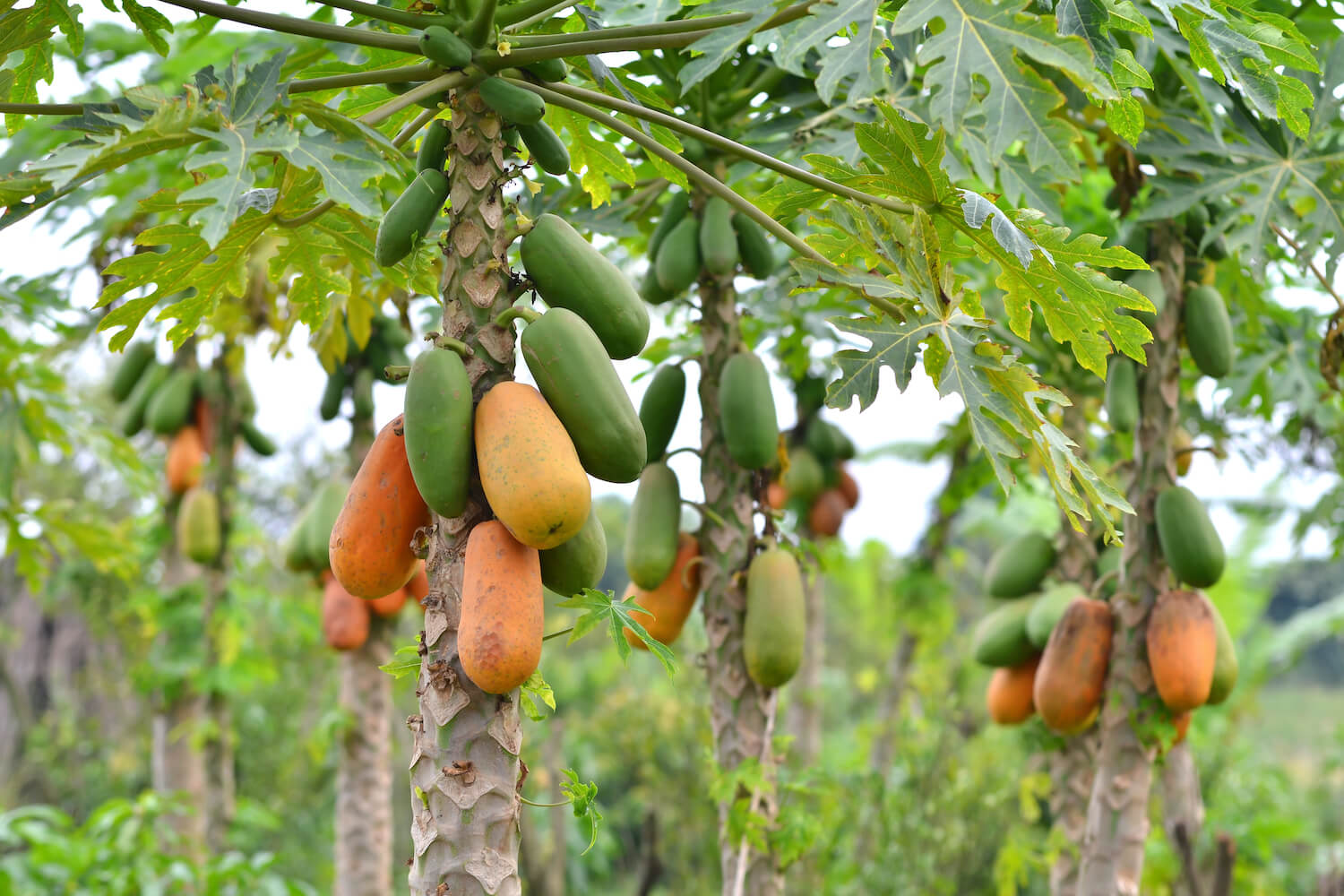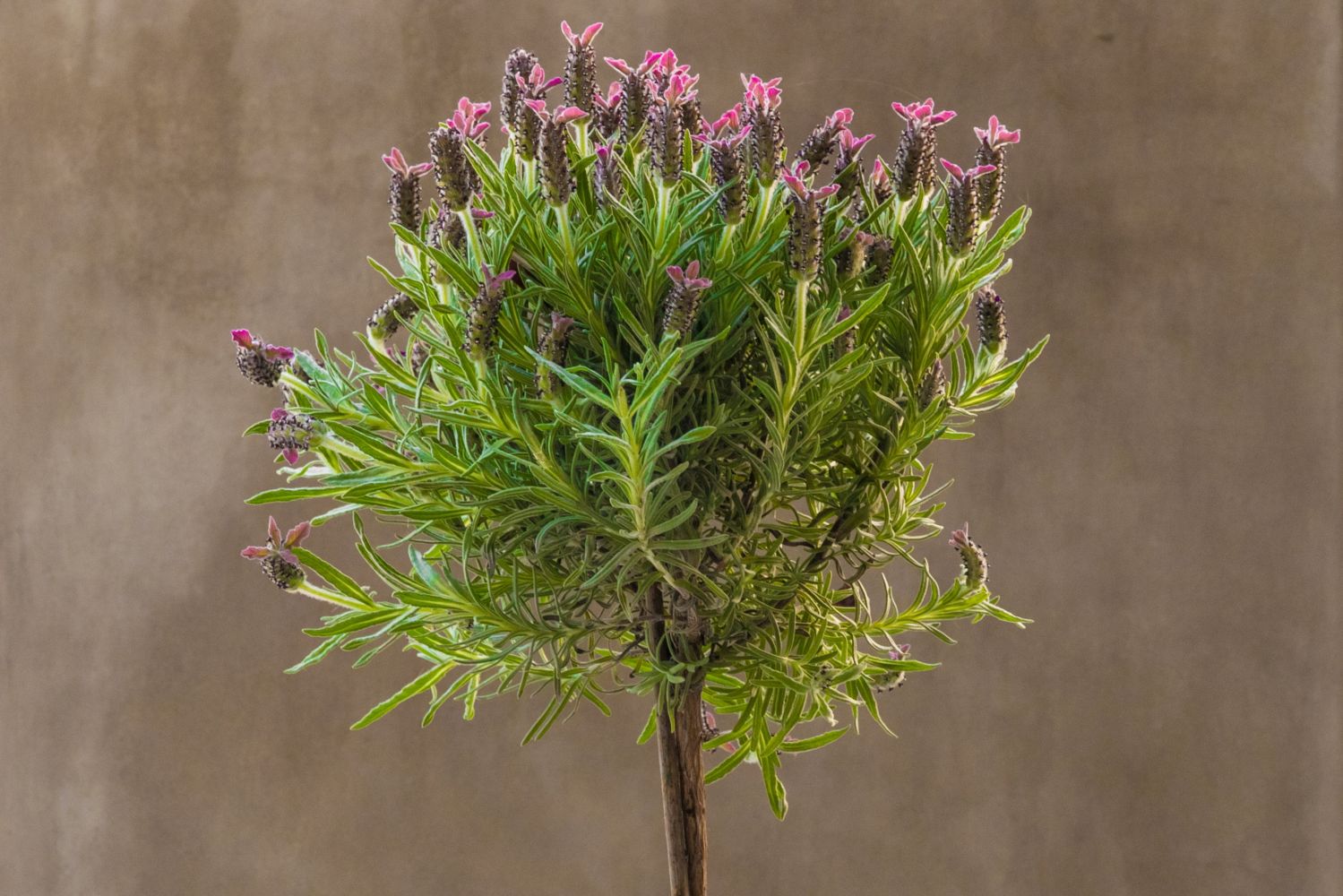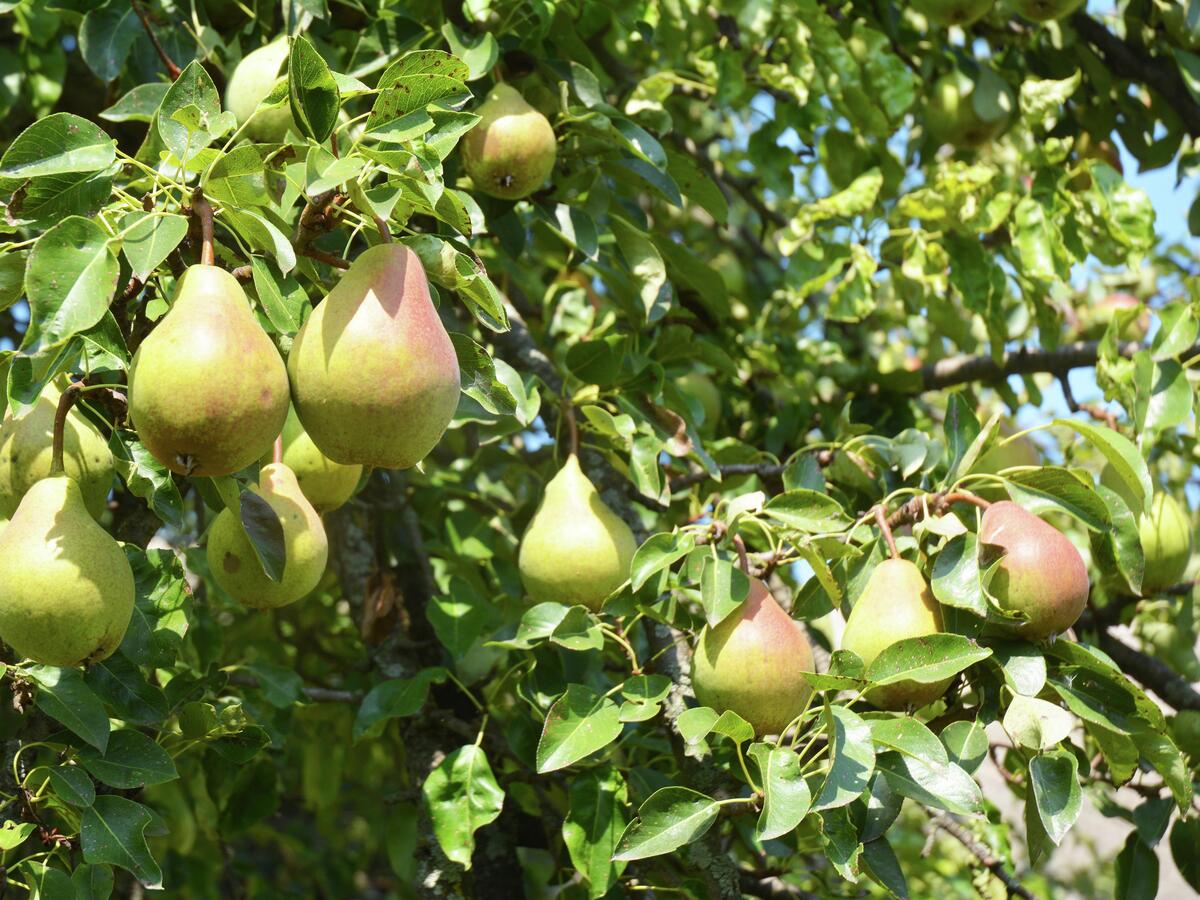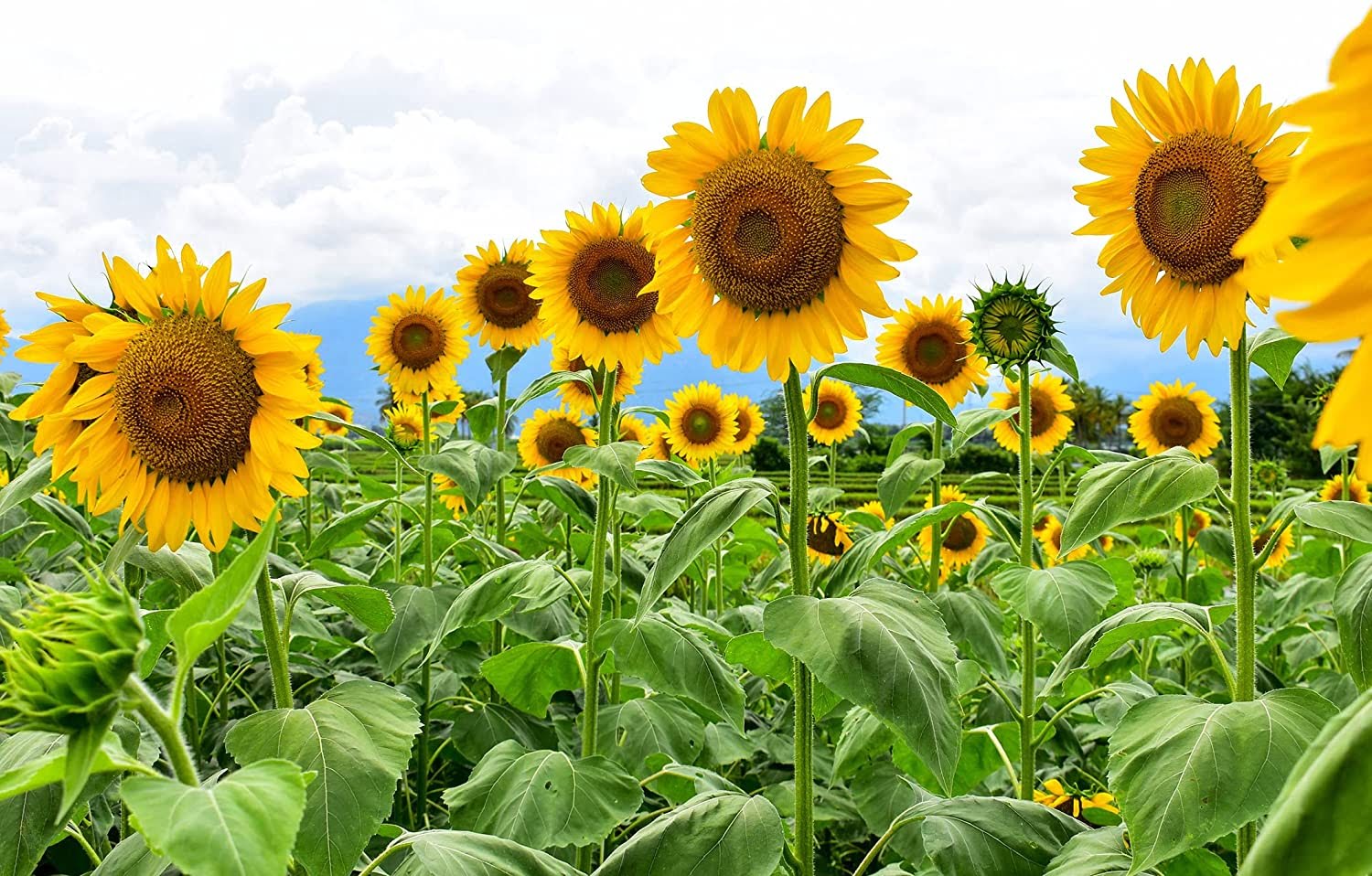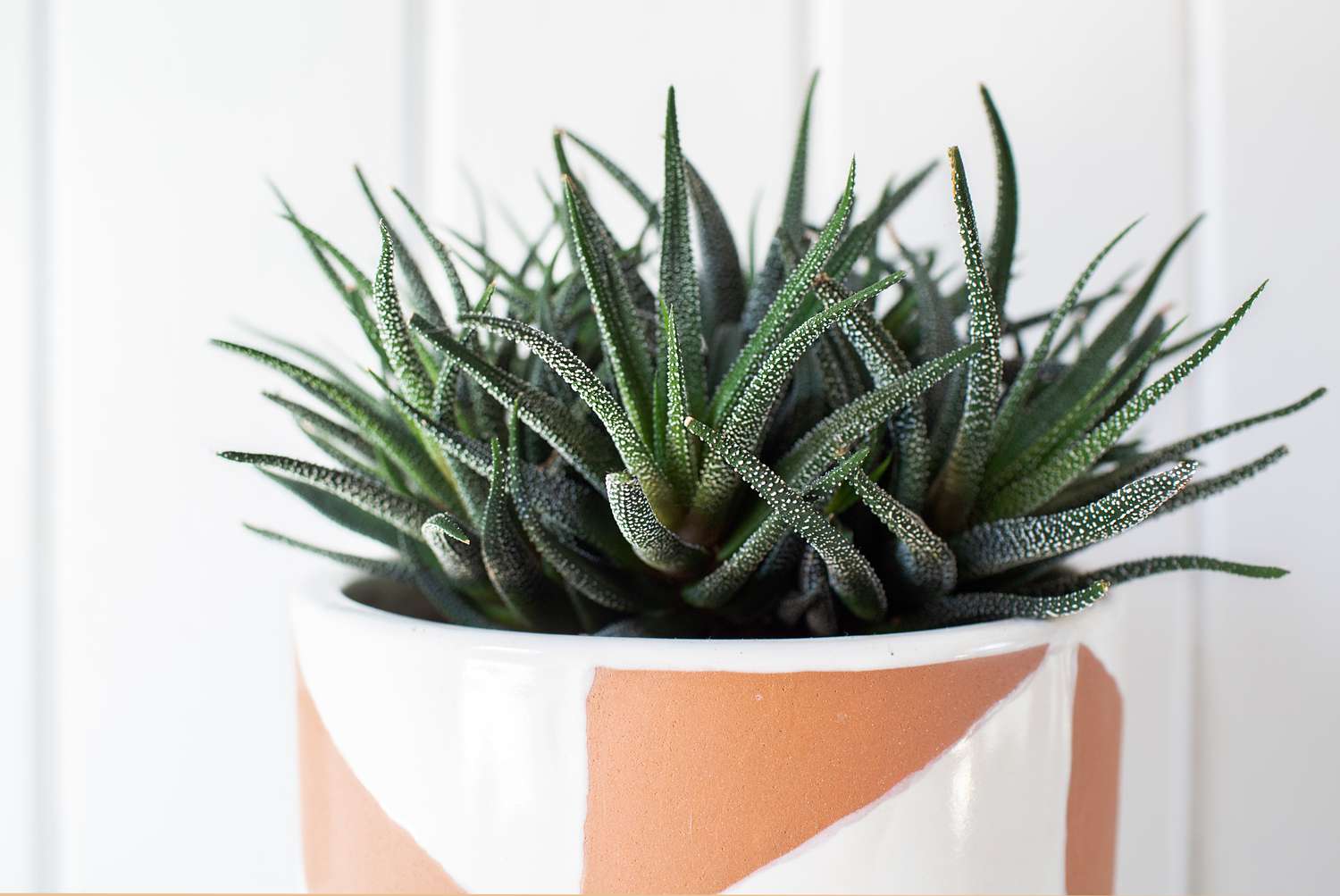Home>Types of Gardening>Ornamental Gardening>How Big Do Crabapple Trees Get
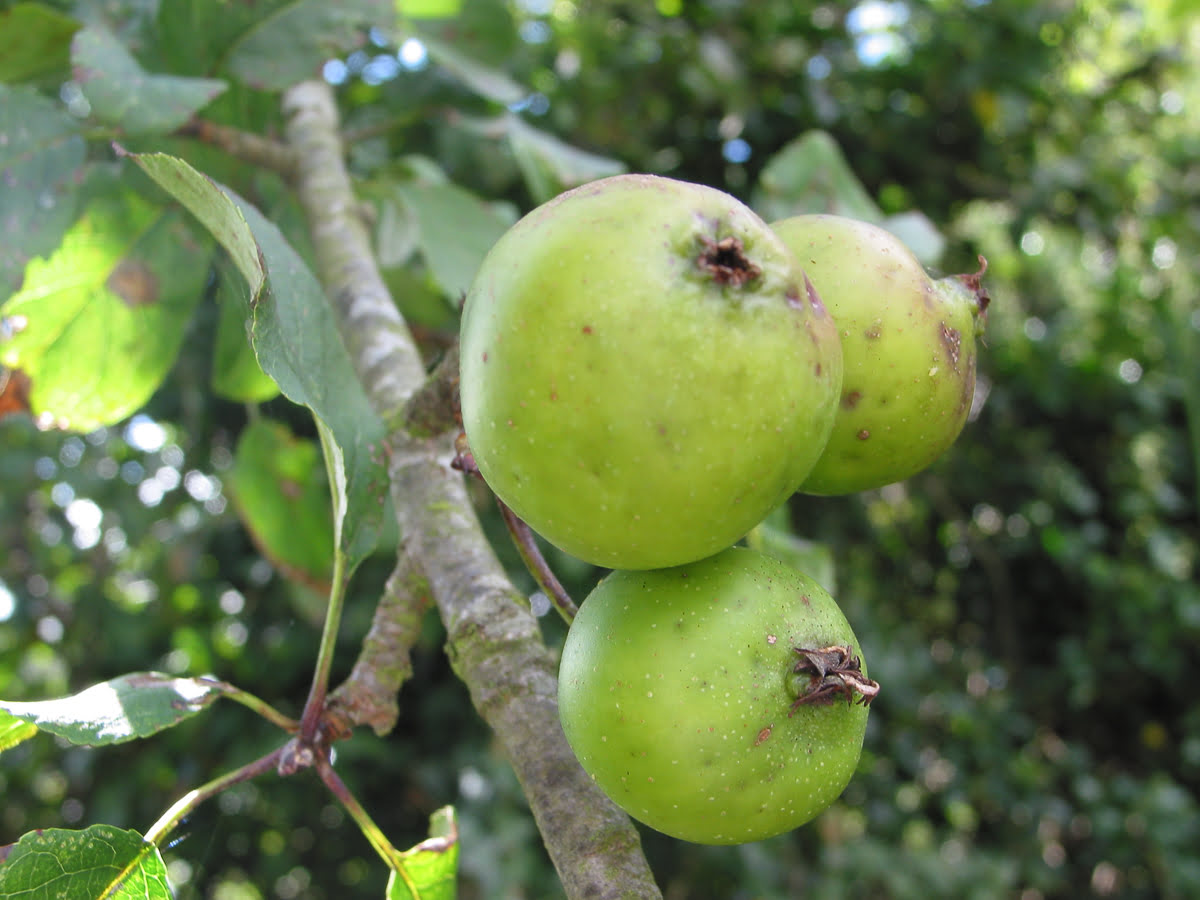

Ornamental Gardening
How Big Do Crabapple Trees Get
Modified: January 22, 2024
Discover the perfect size for your ornamental gardening with crabapple trees. Learn how big they can get and make the right choice for your garden.
(Many of the links in this article redirect to a specific reviewed product. Your purchase of these products through affiliate links helps to generate commission for Chicagolandgardening.com, at no extra cost. Learn more)
Table of Contents
Introduction
Ornamental gardening is a truly rewarding hobby that allows individuals to transform their outdoor spaces into stunning visual masterpieces. One of the key elements in creating a captivating garden is the careful selection of trees, shrubs, and plants that not only add beauty but also provide structure and depth to the overall design. Among the many options available, crabapple trees stand out as a popular choice due to their exquisite flowers, vibrant foliage, and attractive fruit.
Crabapple trees, scientifically known as Malus, are a part of the Rosaceae family and are native to several regions across the globe. These trees are highly valued for their ornamental qualities and have been cultivated for centuries for their beauty and fruit production. Today, they continue to be a staple in ornamental gardening thanks to their wide range of sizes, shapes, and colors.
Understanding the growth habits and sizes of crabapple trees is essential to make informed decisions when selecting and planting them in your garden. By considering factors such as space availability, desired visual impact, and maintenance requirements, you can choose a variety that perfectly complements your outdoor space.
In this article, we will explore the different factors that affect the size of crabapple trees, discuss the average sizes of different varieties, and provide insights on pruning and maintenance techniques to control their size. Whether you have a small urban garden or a sprawling landscape, this information will help you make informed decisions and create a stunning garden filled with enchanting crabapple trees.
Understanding Crabapple Trees
Crabapple trees are an appealing choice for ornamental gardening due to their attractive features and versatility. These trees are deciduous, meaning they lose their leaves during the winter months, and offer a wide range of sizes, shapes, flower colors, and fruit varieties. Understanding their natural growth habits and characteristics will provide valuable insights into how they can best be incorporated into your garden design.
Crabapple trees typically have a rounded or vase-shaped canopy, with branches that spread out and often arch gracefully. Depending on the variety, they can range in size from compact dwarf trees, suitable for smaller gardens or containers, to large standard-sized trees, which require ample space to thrive.
One of the most distinctive features of crabapple trees is their stunning flowers. Blooming in spring, these flowers come in a variety of colors, including white, pink, red, and purple. The flowers can be single, semi-double, or double, with each type offering its own unique charm. During the summer, the crabapple tree’s foliage provides an additional visual appeal, with leaves that can range from green to bronze, red, or burgundy.
Another attractive feature of crabapple trees is their fruit. These small, round fruits typically range in size from 1/4 inch to 2 inches in diameter and come in a variety of colors, including red, orange, yellow, and green. The fruit can hang on the tree well into winter, adding vibrant pops of color to the landscape.
Crabapple trees are known for their adaptability to different soil conditions and hardiness in various climate zones. They can thrive in full sun to partial shade, although they generally prefer areas with good air circulation and well-drained soil. While they are relatively low-maintenance trees, regular watering during dry spells and occasional fertilization can promote healthy growth and abundance of flowers and fruits.
Overall, understanding the growth habits, flowers, foliage, and fruiting of crabapple trees will help you appreciate their beauty and make informed decisions when selecting and caring for them in your garden. Now that we have explored the basic characteristics of crabapple trees, let’s delve into the various factors that can influence their size.
Factors Affecting the Size of Crabapple Trees
When it comes to the size of crabapple trees, several factors play a role in determining their ultimate height and spread. Understanding these factors will help you choose a variety that suits your space limitations and design preferences.
Genetics: The genetics of a crabapple tree variety significantly influence its size. Different varieties have been bred over time to exhibit specific growth characteristics. Some are naturally dwarf, while others are semi-dwarf or standard-sized. It is important to research the specific variety you are interested in to understand its expected size range.
Rootstock: The rootstock onto which a crabapple variety is grafted can also impact its size. Certain rootstocks are known for promoting more vigorous growth, resulting in larger trees, while others are selected for their ability to dwarf the scion variety, resulting in smaller trees. Consult with local nurseries or experts to determine the most suitable rootstock for your desired crabapple variety.
Growing Conditions: The environmental conditions in which a crabapple tree is planted can greatly influence its size. Factors such as soil quality, moisture levels, and light availability can impact the tree’s overall growth. Well-drained soil, regular watering, and adequate sunlight will generally promote healthier growth and potentially larger trees.
Pruning: Proper pruning techniques can also affect the size and shape of crabapple trees. Pruning during the dormant season can help control growth and shape the canopy. Regular pruning can also remove dead or damaged branches, improving overall tree health and appearance.
Fertilization: While crabapple trees generally do not require heavy fertilization, providing the right nutrients can promote healthy growth. However, be cautious not to over-fertilize or use excessive amounts of nitrogen, as this can result in excessive growth and may impact the overall size of the tree.
Age: The age of a crabapple tree can also contribute to its size. Younger trees tend to be smaller, while older, more mature trees may have reached their maximum size potential. Keep in mind that some crabapple varieties may take several years to reach their full size, so be patient and allow the tree time to establish and grow.
By considering these factors, you can make informed decisions about the size of the crabapple trees you choose for your garden. Whether you prefer compact trees for smaller spaces or larger specimens for more expansive areas, there is a crabapple variety that will perfectly suit your needs.
Average Size of Crabapple Trees
Crabapple trees come in a variety of sizes, allowing you to choose one that fits perfectly into your garden design. Understanding the average size range of different types of crabapple trees will help you make informed decisions when selecting the right variety for your space.
Dwarf Crabapple Varieties: Dwarf crabapple trees are the smallest in size, typically reaching a height of 6 to 10 feet (1.8 to 3 meters) and spreading about 6 to 8 feet (1.8 to 2.4 meters) wide. These compact trees are ideal for small gardens, container planting, or as focal points in landscaped beds. Despite their small stature, they still produce abundant flowers and fruit, offering a stunning visual display.
Semi-Dwarf Crabapple Varieties: Semi-dwarf crabapple trees are slightly larger, averaging between 10 and 15 feet (3 to 4.5 meters) in height and spreading about 8 to 12 feet (2.4 to 3.7 meters) wide. They are a popular choice for homeowners with medium-sized gardens who desire a more substantial tree presence. Semi-dwarf varieties offer a balance between compact size and a striking display of flowers and fruit.
Standard-Sized Crabapple Varieties: Standard-sized crabapple trees are the largest in size, typically reaching a height of 15 to 25 feet (4.5 to 7.6 meters) and spreading about 12 to 20 feet (3.7 to 6 meters) wide. These trees are well-suited for larger landscapes, where they can provide shade, privacy, and a stunning visual impact. Standard-sized varieties offer the most grandiose display of flowers and fruit, making them a captivating feature in any garden.
It is important to note that the average size of a crabapple tree can vary depending on specific factors, such as genetics, rootstock, and growing conditions. Additionally, some crabapple varieties may lean towards the smaller end of the size spectrum, while others may reach the higher end. Therefore, it is crucial to research and select the specific variety that matches your desired size preferences.
Consider the available space in your garden, the intended visual impact, and the maintenance requirements when choosing the size of your crabapple trees. Smaller varieties may require less pruning and maintenance, while larger varieties may need more space and upkeep. By selecting the right size, you can ensure that your crabapple trees thrive and enhance the overall beauty of your garden.
Dwarf Crabapple Varieties
Dwarf crabapple varieties are perfect for those with limited space or smaller gardens. These compact trees offer all the beauty and charm of larger crabapple trees, but in a more manageable size. Here, we explore some popular dwarf crabapple varieties that are sure to add a burst of color and elegance to your outdoor space.
Adams (Malus ‘Adams’) is a dwarf crabapple variety that reaches a height of 6 to 8 feet (1.8 to 2.4 meters) and has a rounded shape. It produces bright red buds that open into vibrant pink flowers, creating a stunning display in the spring. The small and persistent red fruit adds visual interest throughout the seasons.
Red Jade (Malus ‘Red Jade’) is a unique dwarf crabapple with a weeping habit. It grows to be about 5 to 7 feet (1.5 to 2.1 meters) in height and spreads approximately 6 to 8 feet (1.8 to 2.4 meters) wide. In spring, the tree is covered in fragrant, deep pink flowers. Its cascading branches create a delightful, elegant focal point in any garden.
Katherine (Malus ‘Katherine’) is another dwarf crabapple variety that matures to a height of 6 to 8 feet (1.8 to 2.4 meters) with a spreading habit. It features beautiful pink flowers that turn into persistent red fruits in the fall, adding year-round interest to your landscape. Katherine is also known for its excellent disease resistance.
Prairifire (Malus ‘Prairifire’) is a compact crabapple variety reaching a height of 8 to 10 feet (2.4 to 3 meters). It showcases deep red buds that open into dark pink flowers in spring. The foliage unfolds in a deep purple-red shade, creating a striking contrast. Prairifire also produces small, persistent dark red fruits that attract birds.
Sugar Tyme (Malus ‘Sugar Tyme’) is a small crabapple tree that grows to about 8 to 10 feet (2.4 to 3 meters) in height. It features delicate, fragrant white flowers that appear in spring, followed by small yellow fruits that persist into the winter months. Sugar Tyme is known for its disease resistance and ability to thrive in various soil conditions.
In addition to their compact size, dwarf crabapple varieties are often valued for their disease resistance and low-maintenance qualities. They are an excellent choice for urban gardens, small yards, or patio containers, where their beauty can be enjoyed up close. Dwarf crabapples provide a burst of color, attract beneficial pollinators, and bring a touch of charm to any outdoor setting.
When selecting a dwarf crabapple variety, consider factors such as flower color, fruit persistence, disease resistance, and overall growth habit. By carefully choosing a variety that suits your garden’s aesthetic and requirements, you can enjoy the beauty and benefits of crabapple trees despite limited space.
Semi-Dwarf Crabapple Varieties
Semi-dwarf crabapple trees offer a balance between the compact size of dwarf varieties and the larger stature of standard-sized trees. These medium-sized trees are an excellent choice for homeowners with moderately sized gardens who desire a more substantial presence. Here, we explore some popular semi-dwarf crabapple varieties that are sure to enhance your outdoor space with their beauty and versatility.
Harvest Gold (Malus ‘Harvest Gold’) is a semi-dwarf crabapple that reaches a height of 10 to 12 feet (3 to 3.6 meters) with a slightly spreading habit. It features stunning golden-orange fruit that hangs on the tree well into winter, providing colorful accents against the winter landscape. The tree’s white flowers in spring and glossy green foliage in summer add to its year-round appeal.
Indian Summer (Malus ‘Indian Summer’) is a semi-dwarf crabapple variety that grows to be around 10 to 15 feet (3 to 4.5 meters) in height. It produces beautiful dark pink flowers in the spring, followed by small persistent red fruit. The deep green foliage turns an attractive shade of purple in the fall, adding to its visual interest throughout the seasons.
Donald Wyman (Malus ‘Donald Wyman’) is a popular semi-dwarf crabapple known for its excellent disease resistance. This tree reaches a height of 12 to 15 feet (3.6 to 4.5 meters) with a slightly spreading shape. It features white flowers in spring and small bright red fruits that bring a burst of color to the landscape. The attractive dark green leaves add to its overall appeal.
Sargent (Malus ‘Sargent’) is a semi-dwarf crabapple variety that grows to around 10 to 12 feet (3 to 3.6 meters) in height. It showcases beautiful pink flowers in spring and glossy green foliage throughout the growing season. Sargent is also valued for its excellent disease resistance, making it a low-maintenance choice for any garden.
Radiant (Malus ‘Radiant’) is another semi-dwarf crabapple tree that reaches a height of 8 to 12 feet (2.4 to 3.7 meters) with a rounded shape. It features vibrant deep pink flowers that appear in spring, creating a stunning visual display. The tree’s glossy green foliage transitions to a yellow-red hue in the fall, adding to its aesthetic appeal.
Semi-dwarf crabapple varieties offer a happy medium between compact trees and larger specimens. These trees provide a striking visual impact without overwhelming smaller gardens, making them ideal for homeowners who desire a more substantial presence without sacrificing too much space. With their beautiful flowers, attractive fruits, and disease resistance, semi-dwarf crabapples are a fantastic addition to any landscape.
When considering semi-dwarf crabapple varieties, evaluate factors such as flower color, fruit persistence, disease resistance, and growth habit. This will help you select a tree that meets your aesthetic preferences and fits harmoniously into your garden design.
Standard-Sized Crabapple Varieties
Standard-sized crabapple trees are the largest in size, offering a commanding presence in any landscape. These trees reach tall heights and have broad spreads, making them ideal for larger gardens or open spaces where they can truly shine. Here, we explore some popular standard-sized crabapple varieties known for their stunning beauty and impressive size.
Spring Snow (Malus ‘Spring Snow’) is a standard-sized crabapple variety that is truly unique. It showcases pure white flowers in the spring, creating a breathtaking sight. Unlike other crabapples, Spring Snow does not produce fruit, allowing the tree’s exquisite flowers to steal the show. With its robust growth and large size, it makes a powerful statement in any garden.
Prairifire (Malus ‘Prairifire’) is not only available as a semi-dwarf variety, but also as a standard-sized crabapple tree. This tree reaches a height of 15 to 20 feet (4.5 to 6 meters) with a rounded shape. It features deep pink flowers that are followed by small persistent dark red fruits, adding vibrant color to the landscape. The foliage of Prairifire unfolds in a deep purple-red shade, creating a striking contrast.
Robinson (Malus ‘Robinson’) is a standard-sized crabapple variety that grows to be around 15 to 20 feet (4.5 to 6 meters) tall. It offers clusters of pink flowers in the spring and small rounded red fruits that persist throughout the winter. The tree’s green foliage turns a lovely coppery hue in the fall, enhancing its visual appeal.
Donald Wyman (Malus ‘Donald Wyman’) is not only available as a semi-dwarf variety, but also as a standard-sized crabapple tree. This tree can reach a height of 20 to 25 feet (6 to 7.6 meters) with a slightly spreading shape. It features beautiful white flowers in the spring and small bright red fruits that bring a burst of color to the landscape. The attractive dark green leaves add to its overall appeal.
Indian Magic (Malus ‘Indian Magic’) is a standard-sized crabapple variety known for its stunning color display. It reaches a height of 15 to 20 feet (4.5 to 6 meters) with an upright shape. In spring, the tree is covered in an abundance of deep pink flowers, creating a captivating visual spectacle. The foliage unfolds in a reddish-purple hue, adding to its allure.
Standard-sized crabapple varieties provide a grand and impressive presence in gardens and open spaces. Their tall stature, broad spread, and striking flowers or fruits make them a focal point in any landscape design. These trees are particularly suitable for larger properties where their size can be fully appreciated.
When selecting a standard-sized crabapple variety, consider factors such as flower color, fruit persistence, disease resistance, and overall growth habit. Carefully evaluate the available space in your garden and choose a variety that complements the style and scale of your landscape.
Pruning and Maintenance for Controlling Size
Proper pruning and maintenance techniques are essential for controlling the size of crabapple trees and ensuring their healthy growth. By implementing regular pruning practices and providing adequate care, you can maintain the desired size and shape of your trees. Here are some guidelines to help you control the size of your crabapple trees:
Prune During Dormant Season: The best time to prune crabapple trees is during the dormant season, typically in late winter or early spring before new growth begins. Remove any dead, damaged, or diseased branches first, followed by thinning out overcrowded branches to improve air circulation within the tree’s canopy.
Prune for Structure: When pruning, focus on maintaining a strong and well-balanced framework for your crabapple tree. Remove any branches that are crossing, rubbing against each other, or growing towards the center of the tree. Aim to create an open structure that allows light and air to penetrate, promoting overall tree health.
Size Control: To control the size of your crabapple tree, selectively remove branches that are growing in undesirable directions or are contributing to excessive growth. Look for branches that are extending beyond the desired height or width and prune them back to maintain the desired size and shape. Regular pruning can prevent the tree from becoming too large for your space.
Avoid Overpruning: While controlling the size of your crabapple tree is important, it is crucial to avoid overpruning. Removing too many branches at once can stress the tree and affect its overall health. Aim for a gradual approach, spreading out pruning sessions over several years, if necessary, to achieve the desired size and maintain the tree’s vitality.
Maintenance Care: In addition to pruning, providing proper care throughout the year is important for controlling the size of your crabapple trees. Adequate watering during dry spells, regular fertilization, and mulching to retain moisture and suppress weeds will promote healthy growth without excessive vigor. Additionally, monitoring for pests and diseases and taking appropriate measures to address any issues will help maintain the tree’s overall health and size.
Remember that each crabapple variety may have its own growth characteristics, so it is important to understand the specific needs of your chosen variety. Consult with local experts or nurseries for advice tailored to your specific area and variety.
By employing proper pruning techniques and providing regular maintenance, you can effectively control the size and shape of your crabapple trees, ensuring they harmonize beautifully with your garden design and space limitations.
Conclusion
Crabapple trees are a wonderful addition to any ornamental garden, bringing beauty, color, and charm to the landscape. Understanding the factors that influence their size and growth, such as genetics, rootstock, and maintenance practices, is essential when selecting the right variety for your garden. Whether you prefer the compactness of dwarf varieties, the balance of semi-dwarf trees, or the grandeur of standard-sized specimens, there is a crabapple variety that will suit your space and design aspirations.
By choosing the appropriate size, considering factors such as available space, maintenance requirements, and visual impact, you can ensure that your crabapple trees flourish and enhance the overall beauty of your garden. Regular pruning during the dormant season, along with proper care, will help control the size and shape of your trees while promoting their health and vitality.
From the stunning flowers that grace the branches in spring to the vibrant fruits that adorn the tree into winter, crabapple trees offer year-round beauty and interest. Their adaptability to different soils, hardiness in various climates, and disease resistance make them an excellent choice for ornamental gardens of all sizes.
As you embark on your journey of incorporating crabapple trees into your garden, remember to research specific varieties, seek advice from local experts, and be patient as your trees establish and grow. With the right selection and care, your garden will be transformed into a breathtaking oasis filled with the enchanting beauty of crabapple trees.

